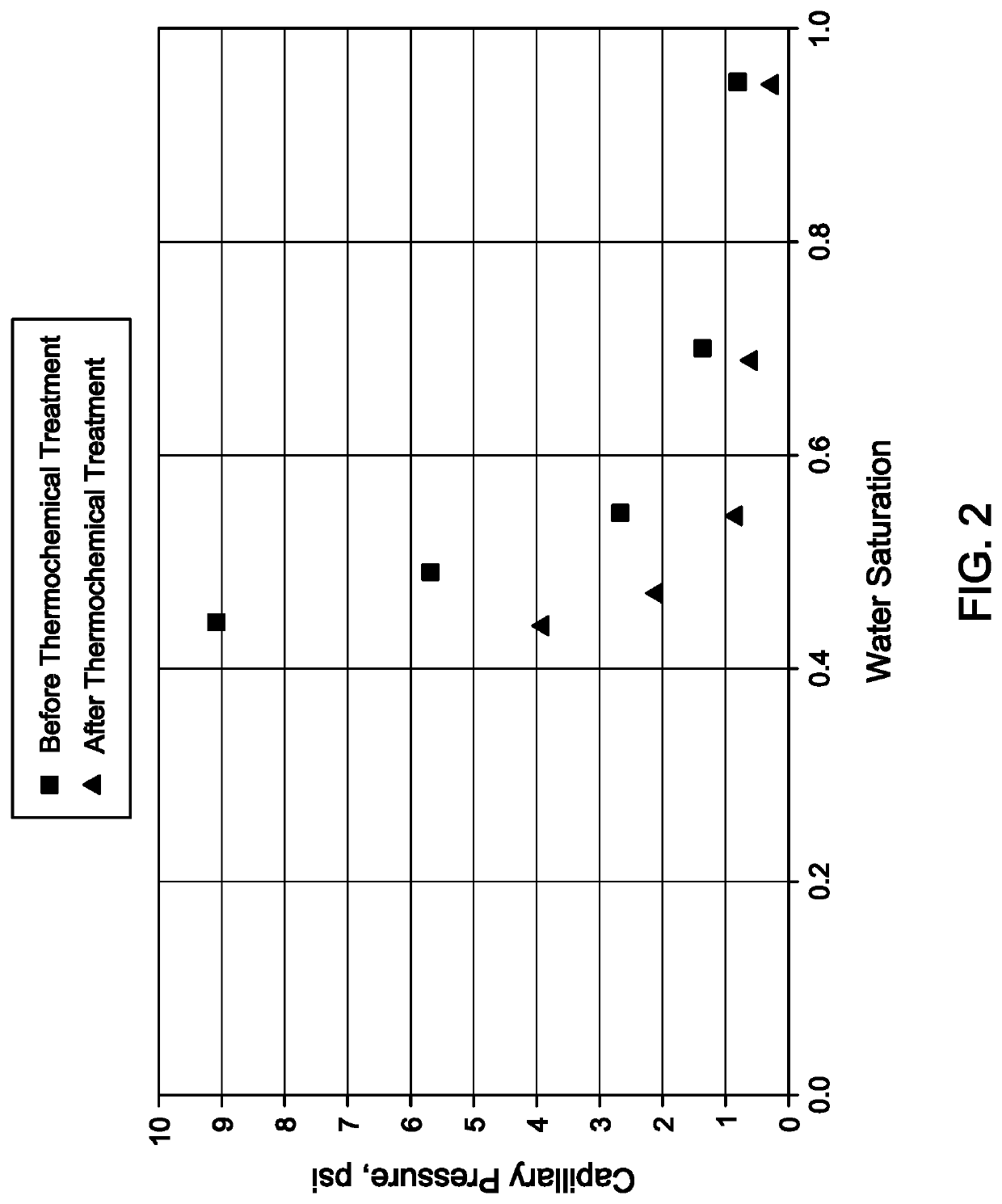Removal of water blockage in tight gas reservoir using thermochemical fluids
a technology of thermochemical fluids and tight gas reservoirs, which is applied in fluid removal, borehole/well accessories, insulation, etc., can solve the problems of increasing water saturation in the near-wellbore area, hindering affecting the efficiency of such remediation methods, so as to increase the permeability of hydrocarbon flow, stimulate hydrocarbon production, and water saturation
- Summary
- Abstract
- Description
- Claims
- Application Information
AI Technical Summary
Benefits of technology
Problems solved by technology
Method used
Image
Examples
Embodiment Construction
[0037]So that the manner in which the features and advantages of the embodiments of compositions, systems, and methods for thermochemical removal of water blockages from hydrocarbon-bearing reservoirs, as well as others, which will become apparent, may be understood in more detail, a more particular description of the embodiments of the present disclosure briefly summarized previously may be had by reference to the embodiments thereof, which are illustrated in the appended drawings, which form a part of this specification. It is to be noted, however, that the drawings illustrate only various embodiments of the disclosure and are therefore not to be considered limiting of the present disclosure's scope, as it may include other effective embodiments as well.
[0038]Exothermic thermochemical compositions and methods provide for effective, non-damaging water blockage treatment methods. Equations 2 and 3 help describe the effectiveness of the heat-generating reactions:
[0039]ɛ=ΔHQtEq.2Qt...
PUM
| Property | Measurement | Unit |
|---|---|---|
| porosity | aaaaa | aaaaa |
| temperature | aaaaa | aaaaa |
| temperature | aaaaa | aaaaa |
Abstract
Description
Claims
Application Information
 Login to View More
Login to View More - R&D
- Intellectual Property
- Life Sciences
- Materials
- Tech Scout
- Unparalleled Data Quality
- Higher Quality Content
- 60% Fewer Hallucinations
Browse by: Latest US Patents, China's latest patents, Technical Efficacy Thesaurus, Application Domain, Technology Topic, Popular Technical Reports.
© 2025 PatSnap. All rights reserved.Legal|Privacy policy|Modern Slavery Act Transparency Statement|Sitemap|About US| Contact US: help@patsnap.com



